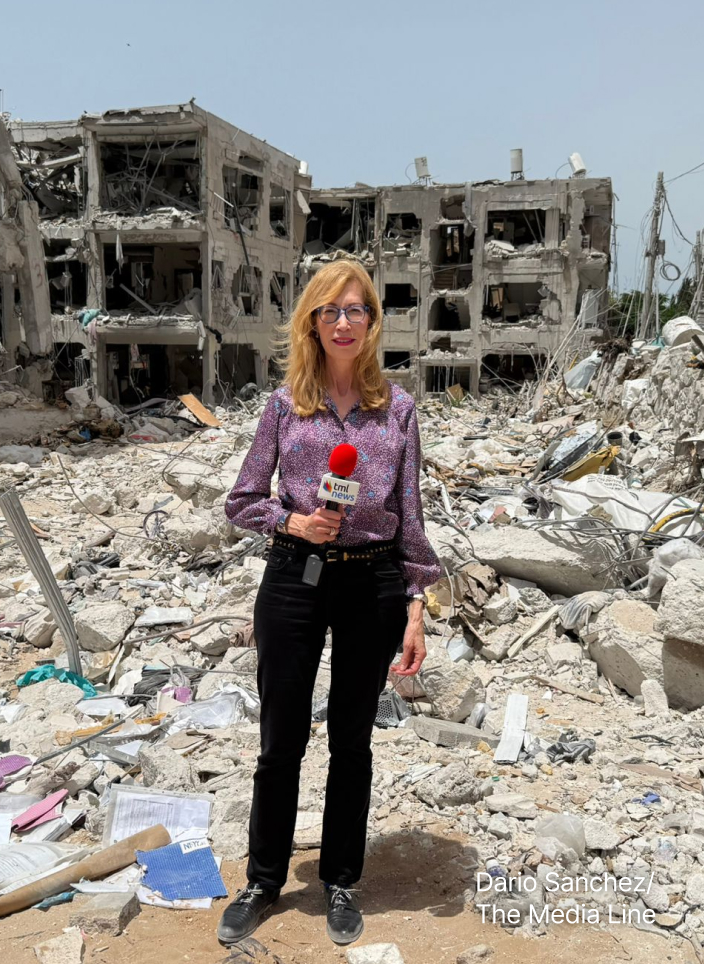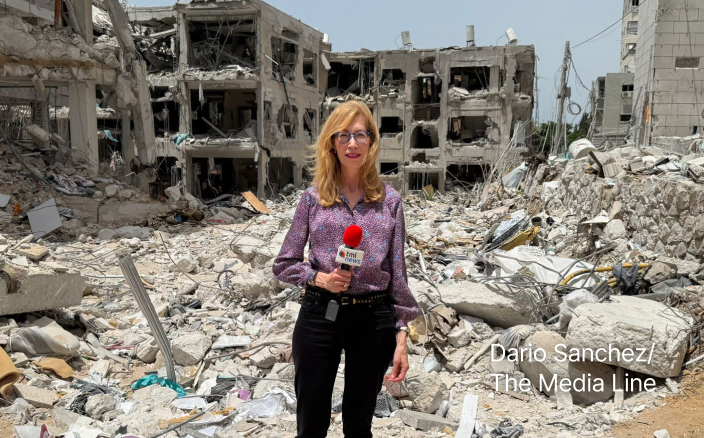After decades, Isawiya to get construction permits – though locals say this won’t meet their needs
For the first time in nearly three decades, Palestinian residents of the neighborhood of Isawiya in east Jerusalem could receive building permits to erect new homes.
The plan, which has been approved by the Jerusalem Municipality, calls for a new zoning mechanism that provides retroactive approval for most buildings put up without permits.
Residents say it is a step in the right direction although it does not meet their needs.
Palestinians make up 38% of Jerusalem’s more than 900,000 people.
The neighborhood is situated next to Mount Scopus, the location of a large Hebrew University of Jerusalem campus and the northern branch of Hadassah-University Medical Center. It is home to an estimated 22,000 Palestinians. A scarcity of land and the lack of construction permits have forced them to build indiscriminately.
Palestinian neighborhoods in east Jerusalem suffer from overcrowding, with many homes built one upon another, with barely any space between them.
The lack of permits means many residents live in fear of having their home demolished.
Omar Attia, the local mukhtar, Arabic for village chief, tells The Media Line that the municipality has not paid much attention to Isawiya or its residents.
“East Jerusalem has been under occupation for 53 years,” he says. “The outline map that was now announced has been in the works for 27 years. Is this reasonable? Can you imagine that a master plan for a village of 22,000 takes 27 years to complete?”
The outline map that was now announced has been in the works for 27 years. Is this reasonable? Can you imagine that a master plan for a village of 22,000 takes 27 years to complete?
Isawiya lacks many basic services.
Give the gift of hope
We practice what we preach:
accurate, fearless journalism. But we can't do it alone.
- On the ground in Gaza, Syria, Israel, Egypt, Pakistan, and more
- Our program trained more than 100 journalists
- Calling out fake news and reporting real facts
- On the ground in Gaza, Syria, Israel, Egypt, Pakistan, and more
- Our program trained more than 100 journalists
- Calling out fake news and reporting real facts
Join us.
Support The Media Line. Save democracy.


“Look around and you see the inadequate sanitation,” Attia relates.
Residents have received an “astonishing” number of demolition orders, he says, placing the figure at some 2,000 and adding that Isawiya has already “paid millions of shekels in construction violation fines.”
Attia, 55 and father of five teenagers, is frustrated with the lack of public spaces for recreation. He says his kids are old enough to understand that they are missing out on many of the services that Jewish residents in the adjoining French Hill neighborhood take for granted.
“I go out with my sons and daughters. Thirty seconds out of the village and a different life begins, another world. My children are dazzled,” he says.
I go out with my sons and daughters. Thirty seconds out of the village and a different life begins, another world. My children are dazzled
“The French Hill neighborhood lives a different life: parking lots, parks, shopping centers, benches to sit on, trees,” Attia says. “The whole of Isawiya does not have a single tree or bench for sitting in the shade.”
Like other Palestinian neighborhoods in East Jerusalem, Isawiya sees regular clashes between police and local youths.
“This racism was established through their [Israeli] policies. I didn’t create it – they created it,” Attia says.
“I want life. We all want life and peace, but when you push me into a corner and confiscate my livelihood and my home, many feel it is outrageous to the point that they will do things that the mind cannot accept,” he exclaims.
I want life. We all want life and peace, but when you push me into a corner and confiscate my livelihood and my home, many feel it is outrageous to the point that they will do things that the mind cannot accept
Mohammed Abu Hummus, a 53-year-old member of Isawiya’s Parents’ Committee, tells The Media Line that he is in the dark regarding a new planning policy.
“So far, we did not see or hear anything,” he states. “They [the municipality] said that they had submitted the outline plan for the village.”
Abu Hummus says that such a plan is long overdue but insists that if one is indeed to be introduced, it is only to “mollify” residents.
“There will be objections because there are parcels of our land that remain outside this map. At the same time, we have houses built four and five decades ago that are still outside this map,” he notes.
People, he says, have no choice but to build without permits.
“There is overcrowding and a massive housing crisis due to the lack of land for construction and because of the occupation-municipality’s policy toward the people of the village,” he relates.
Suleiman, a father of three boys who asks that his last name be withheld because he fears Israeli government retribution, tells The Media Line that he is one of those in Isawiya who built without a permit.
He says the municipality slapped him with a NIS 100,000 fine, the equivalent of about $28,500, and has been paying it off in monthly installments of NIS 1,200.
Jamal Majid Alyan, a taxi driver, questions the municipality’s motives, insisting that the city’s aim is to surround Isawiya with Jewish neighborhoods.
“We are under occupation and the occupation won’t give you anything,” he says, adding that “there is no intention” to allow the expansion of Isawiya.
“The village is bordered on all sides by either the Ma’ale Adumim settlement or the French Hill neighborhood. There is not enough land for construction and for residents according to the planning map,” he says.
The village is bordered on all sides by either the Ma’ale Adumim settlement or the French Hill neighborhood. There is not enough land for construction and for residents according to the planning map
He notes, however, that private land is available.
“We have land for the residents of the village outside the proposed map,” he says. “Why don’t they allow construction on it?”